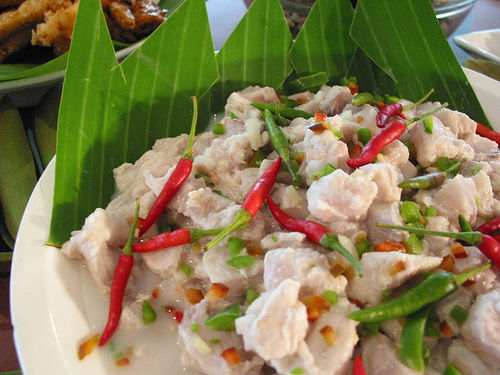Fascinated by its name, lokot-lokot was not really prominent in the entire Philippines. When I first heard the word "lokot", the first thing that it crossed in my mind is like a thing that you rolled. Then my guessed had not missed.
THE ORIGIN OF THE “LOKOT-LOKOT”
The Muslim communities in the Zamboanga Peninsula are known for the variety of delicacies they produce during special occasions, especially the “Hariraya” or the feast of the Eid-il-Fitr, which celebrates the end of the fasting month of Ramadan. Foremost among the goodies is the golden brown curious-looking “locot-locot” or “jaa” as the villagers call them. A lot of people actually consider it as the “queen” of the delicacies because it is the most popular and frequently asked for by guests.
It is fascinating to watch someone who is seeing the locot-locot for the first time. After asking what it is, he instantly wants to taste it, and as it crunches in his mouth his eyes light up with pleasure and he nods approvingly. Some give the okay sign or put up their thumbs enthusiastically.
If you ask how the locot-locot came about, its origin is sadly lost in the mist of time. Fortunately the ancestors of the present Muslims passed on its technology to the next generations down through the millennia. Some people believe it came from Malaysia or Indonesia as the region, including the southern Philippines, was once a part of the great Madjapahit Empire during the 13th and 14th centuries. The seafaring Malays probably brought it to our shores as they wandered freely throughout the area.
Legend has it that it was the locot-locot that inspired the appearance of the Chinese noodles, such as the sotanghon, bihon and miswa. It is said that several attempts of the people of China to imitate the locot-locot led to their creation, which over time became famous delicacies themselves.
Making locot-locot requires a lot of time and hard work. First the grains of rice have to be pounded into flour. Then the correct proportions of water and sugar are added to create a gooey mixture which is poured into a container made of coconut shell with regular small holes at the bottom, all the while it is poised above a frying pan filled with hot oil. As it turns golden brown it is deftly and expertly folded and shaped in the pan with a couple of wooden spoons to create the desired look. Watching a cook do the locot-locot is like watching an artist in motion.
You can tell a house is making locot-locot by the rhythmic sound coming from the kitchen made by the beating of the coconut container to pour out the dough into the frying pan. Some purists say if the rhythm is out of sync the locot-locot will not look attractive and enticing.
(Other infos came from the Facebook page of Taluksangay Muslim Delicacies)









 6:25 AM
6:25 AM
 Unknown
Unknown
















